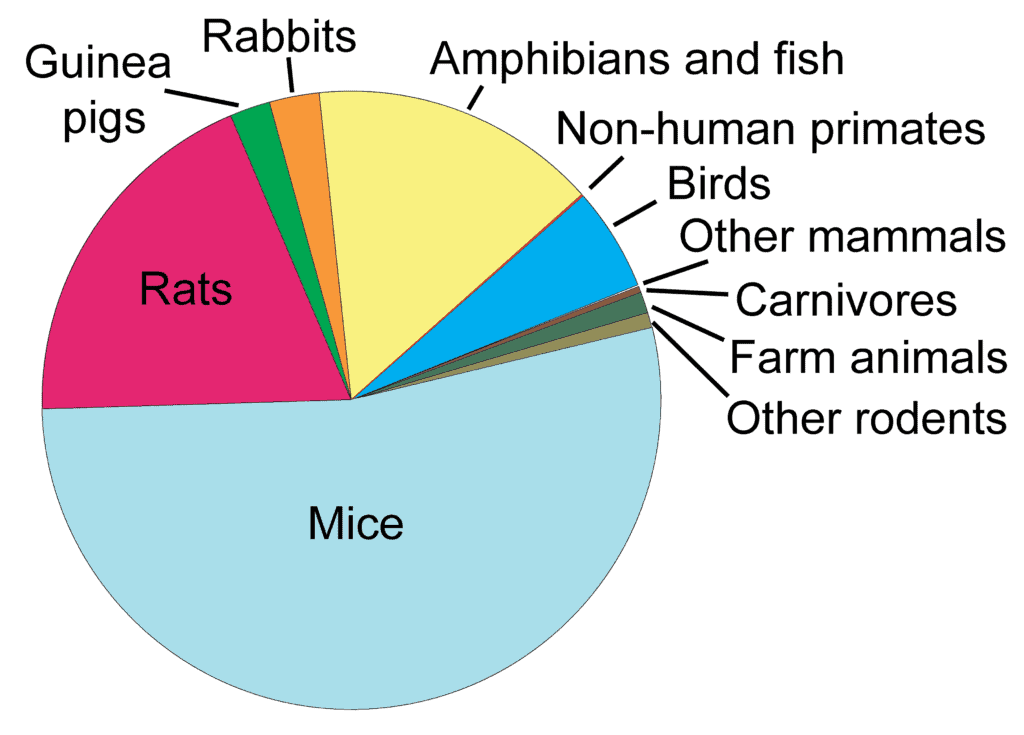
Animal testing is something we like to put deep into the back of our mind. We know it’s happening — every single day, animals are subjected to testing, some of which are painful, and most of which are unpleasant. Sometimes, animals are killed during tests. But we also know that at least for now, science needs animals for testing (more on that later). No one really likes to think about how that suffering benefits us; as the saying goes, no one likes to see how a sausage is made. But a team from Understanding Animal Research took 360 cameras into four different animal labs, creating ‘Streetview’ experience, which allows people to “walk around” and see what’s happening in the labs.
A peek into the sausage factory
The Lab Animal Tour visited four animal research facilities in the UK (see them along their respective Streetview):
-
- The University of Bristol’s research centre, where human and veterinary surgeons work side by side on research that benefit both humans and animals;
-
- The MRC Harwell Institute, which hosts thousands of mice used for genetic research;
- The University of Oxford’s primate centre, which focuses on understanding how the brain works;
- The Pirbright Institute, which creates vaccines that protect livestock from diseases such as avian or swine flu.
It’s a remarkable project, and I recommend taking a walk through the different rooms and labs within the buildings. Scientists were also happy to see their activity publicized. Professor Guy Orpen, Deputy Vice-Chancellor and Provost at the University of Bristol, said:
“Research using animals has made, and continues to make, major scientific advances in understanding and treating many major health problems. The University is committed to a culture of care and the welfare of its animals is a top priority. Being part of the UAR film is a great opportunity to show how research using the One Health concept can benefit the health and welfare of humans and animals alike.”
Still, it should be noted that there are just four animal labs from a single country — different countries have different standards and different ethical guidelines, so you might see a completely different picture in a similar project in the US or China, for example.
The future of animal research
The ethical issue of animal testing still remains.

As we wrote in a previous article, the USDA published a report in 2005, finding that 668,000 animals (57%) were used in animal testing without anything to relieve their pain or distress. Another 425,000 (36%) were used in procedures in which pain or distress was relieved by anesthesia, while 85,000 (7%) were used in studies that would cause pain or distress that would not be relieved. That figure doesn’t even include rats and mice, birds, or invertebrates — which are the most commonly used creatures, but in the USA, they (along with birds and amphibians) are not defined as animals under animal experiments regulations — so establishing a statistic is hard. Those figures have been contested by Tom Holder from Speaking of Research, who claims that there were significantly fewer animals, but still, over 700,000, used in animal tests and studies (also not including mice).
One 2008 study estimated 115 million animals are used a year for scientific research alone.
The figures may be contested, but the bottom line remains that we’re subjecting animals to suffering for research. New technologies promise to significantly reduce that problem.

Notably, organs on a chip have been developed, and they’re getting cheaper and cheaper. An organ-on-a-chip is a multi-channel 3-D microfluidic cell culture chip that simulates the activities, mechanics and physiological response of entire organs and organ systems in a particular situation. The thing is, as Holder points out in an email to ZME Science, there’s only so much that simulators can do. When it comes to more complex systems, like when dealing with paralysis or pregnancy, animal research will still be key. Indeed, it’s hard to see how organs on a chip could ever simulate a pregnancy or a chimeric mouse (a single organism composed of cells from different zygotes).
This is a complex issue, with no simple and clear solution. But in the meantime, there’s one thing we can do — try to limit animal testing to the absolute necessity. Basically, I’m talking about the cosmetic industry. It’s estimated that 100,000-200,000 animals suffer and die just for cosmetics every year around the world. Sure, you can argue that fighting paralysis or developing vaccines justifies this, but you can never argue that having a new, slightly different Rimmel does. Not all brands employ animal testing, and we, as consumers, can opt to support these brands.


